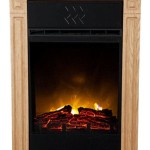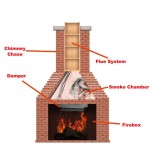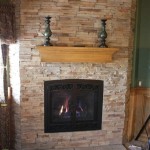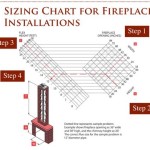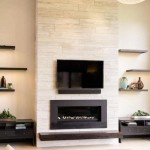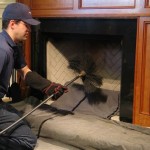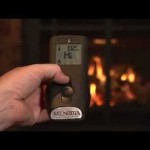Cut Stone Fireplace Surround: Elevating Your Home's Aesthetic
A fireplace serves as a focal point in any living space, offering warmth, comfort, and a touch of elegance. Enhancing the visual appeal of this central feature often involves carefully selecting the right fireplace surround. Among the various options available, a cut stone fireplace surround stands out for its durability, natural beauty, and timeless charm. This article explores the multifaceted aspects of cut stone fireplace surrounds, delving into their benefits, the diverse range of stone types, design considerations, installation intricacies, and essential maintenance practices.
The Enduring Appeal and Advantages of Cut Stone
Cut stone fireplace surrounds possess an inherent allure that transcends fleeting trends. Unlike manufactured materials, natural stone boasts unique textures, color variations, and patterns that contribute to a distinct character. This inherent variability ensures that no two cut stone fireplace surrounds are exactly alike, creating a one-of-a-kind centerpiece for the home.
Beyond aesthetics, cut stone offers several practical advantages. Its exceptional durability ensures longevity, resisting wear and tear from daily use and exposure to heat. Stone is inherently non-combustible, making it a safe choice for a fireplace surround. Its thermal mass properties also contribute to energy efficiency by slowly radiating heat into the room after the fire has died down.
The versatility of cut stone allows for diverse design possibilities. It can be shaped and styled to complement a wide range of architectural styles, from traditional to contemporary. The natural colors and textures of stone harmonize well with various interior design schemes, adding a touch of sophistication to any space.
Furthermore, cut stone is a relatively low-maintenance material. With proper sealing and occasional cleaning, it can retain its beauty and structural integrity for generations.
Exploring the Variety of Stone Types Used in Fireplace Surrounds
The term "cut stone" encompasses a vast selection of natural stones, each possessing unique characteristics that influence its suitability for use as a fireplace surround. The choice of stone type often depends on aesthetic preferences, budget considerations, and the desired level of durability.
Granite: Known for its exceptional hardness and resistance to scratches, heat, and stains, granite is a popular choice for high-traffic areas. Its distinctive speckled appearance comes in a wide array of colors, from light grays and whites to dark blacks and browns. Granite's density makes it an excellent choice for intricate carvings and detailed designs.
Marble: Renowned for its luxurious appearance and smooth, polished surface, marble exudes elegance and sophistication. Its veining patterns and color variations create a visually striking effect. While marble is relatively soft and prone to staining, proper sealing and regular maintenance can preserve its beauty for years to come.
Limestone: Characterized by its earthy tones and subtle textures, limestone offers a more rustic and natural aesthetic. It is a relatively porous stone, making it susceptible to staining. However, proper sealing can mitigate this issue. Limestone is often chosen for its versatility and ability to blend seamlessly with various design styles.
Travertine: Recognizable by its distinctive pitted surface and warm, earthy colors, travertine imparts a sense of natural beauty and character. It is a type of limestone formed around mineral springs. The porous nature of travertine requires careful sealing to prevent staining and water damage.
Slate: Possessing a unique layered structure and a range of dark, muted colors, slate provides a contemporary and sophisticated look. It is known for its durability and resistance to water damage, making it a practical choice for fireplace surrounds. The natural cleft surface of slate adds texture and visual interest.
Sandstone: With its warm, sandy hues and distinctive grain patterns, sandstone evokes a sense of natural warmth and rustic charm. It is a relatively soft stone, requiring careful handling and sealing to prevent scratches and staining. Sandstone is often chosen for its ability to create a cozy and inviting atmosphere.
The decision on which stone type to use depends on the overall design aesthetic sought, the budget available and the lifestyle of the individuals living in the home. Each stone type offers a unique set of properties making it a viable option depending on the specific requirements.
Design and Installation Considerations for a Flawless Result
Designing and installing a cut stone fireplace surround requires careful planning and execution to ensure a visually appealing and structurally sound result. Several factors must be considered, including the dimensions of the fireplace opening, the desired style and design, the structural integrity of the existing wall, and local building codes.
Accurate Measurements: Precise measurements are crucial for ensuring a proper fit and preventing costly errors. The dimensions of the fireplace opening, including the width, height, and depth, must be accurately recorded. The overall dimensions of the surround should be carefully considered to ensure that it complements the size of the room and the fireplace itself.
Style and Design: The design of the cut stone fireplace surround should align with the overall architectural style of the home and the personal preferences of the homeowner. Traditional designs often feature intricate carvings, ornate details, and symmetrical layouts. Contemporary designs tend to be more minimalist, with clean lines and simple geometric shapes. The choice of stone type, color, and texture should also complement the design aesthetic.
Structural Integrity: The existing wall structure must be capable of supporting the weight of the cut stone surround. If the wall is not structurally sound, reinforcement may be required. A professional contractor can assess the wall's load-bearing capacity and recommend appropriate measures to ensure stability.
Installation Process: The installation of a cut stone fireplace surround is a complex process that typically requires the expertise of a skilled mason or contractor. The process involves carefully preparing the surface of the wall, applying mortar or adhesive, and precisely positioning the stone pieces. Proper alignment and leveling are essential for achieving a professional-looking result. Grouting and sealing are typically performed after the stone is installed to protect it from moisture and staining.
Building Codes: Local building codes and regulations may dictate specific requirements for fireplace surrounds, including fire safety standards and clearance distances to combustible materials. It is essential to consult with local authorities and obtain any necessary permits before beginning the installation process.
Properly executing the installation of a cut stone fireplace surround involves considerations from the design phase to the final sealing. Attention to detail and professional expertise will ensure a robust and beautiful final product.
Maintaining the Beauty and Longevity of Your Cut Stone Fireplace Surround
While cut stone is a durable material, proper maintenance is essential for preserving its beauty and extending its lifespan. Regular cleaning and occasional sealing can protect the stone from staining, water damage, and other forms of deterioration.
Regular Cleaning: Routine cleaning helps remove dust, dirt, and soot that can accumulate on the surface of the stone. A soft brush or cloth and a mild, pH-neutral cleaner are typically sufficient for cleaning cut stone. Avoid using harsh chemicals, abrasive cleaners, or scouring pads, as these can damage the stone's surface. It is essential to dry the stone thoroughly after cleaning to prevent water spots.
Sealing: Sealing the cut stone helps protect it from staining and water damage. A penetrating sealer is typically recommended for natural stone, as it allows the stone to breathe while providing a protective barrier. The frequency of sealing depends on the type of stone and the level of exposure to moisture and stains. Generally, sealing should be performed every one to three years.
Stain Removal: If stains occur, prompt removal is essential to prevent them from becoming permanent. The appropriate stain removal method depends on the type of stain and the type of stone. For oil-based stains, a poultice made of absorbent material and a solvent can be used to draw out the stain. For water-based stains, a mild bleach solution may be effective. Always test any stain removal method on an inconspicuous area of the stone before applying it to the entire surface.
Preventative Measures: Taking preventative measures can help minimize the need for extensive cleaning and stain removal. Place a fire screen in front of the fireplace to prevent sparks and embers from landing on the surround. Avoid placing liquids or food directly on the stone surface. Clean up spills immediately to prevent staining.
Professional Maintenance: For more extensive cleaning or repairs, consider hiring a professional stone restoration company. These companies have the expertise and equipment to properly clean, seal, and repair cut stone surfaces without causing damage.
By following these maintenance guidelines, homeowners can ensure that their cut stone fireplace surround retains its beauty and elegance for years to come. Consistent care and attention will preserve the investment and allow the fireplace to remain a focal point of the home.

Verona Cast Stone Fireplace Surround Oregon Castings And Design

Verona Cast Stone Fireplace Surround Oregon Castings And Design

Outdoor Stone Fireplaces Earthworks Natural

Sierra Falls Ledge Cut With Limestone Hearth Fireplace Stone Patio

Fireplace Surrounds Apex Stone

Sierra Falls Ledge Cut With Limestone Hearth Fireplace Stone Patio

Fond Du Lac Limestone Cut Stone Rockfaced Finish Fireplace Surround From United States Stonecontact Com

C Stone Sawn Cut Fireplace Surround From United States Stonecontact Com

Stacked Stone Fireplace 10 Luxurious Design Ideas Stoneyard

Professional Stonework Stone Fireplace Surround Hearths

